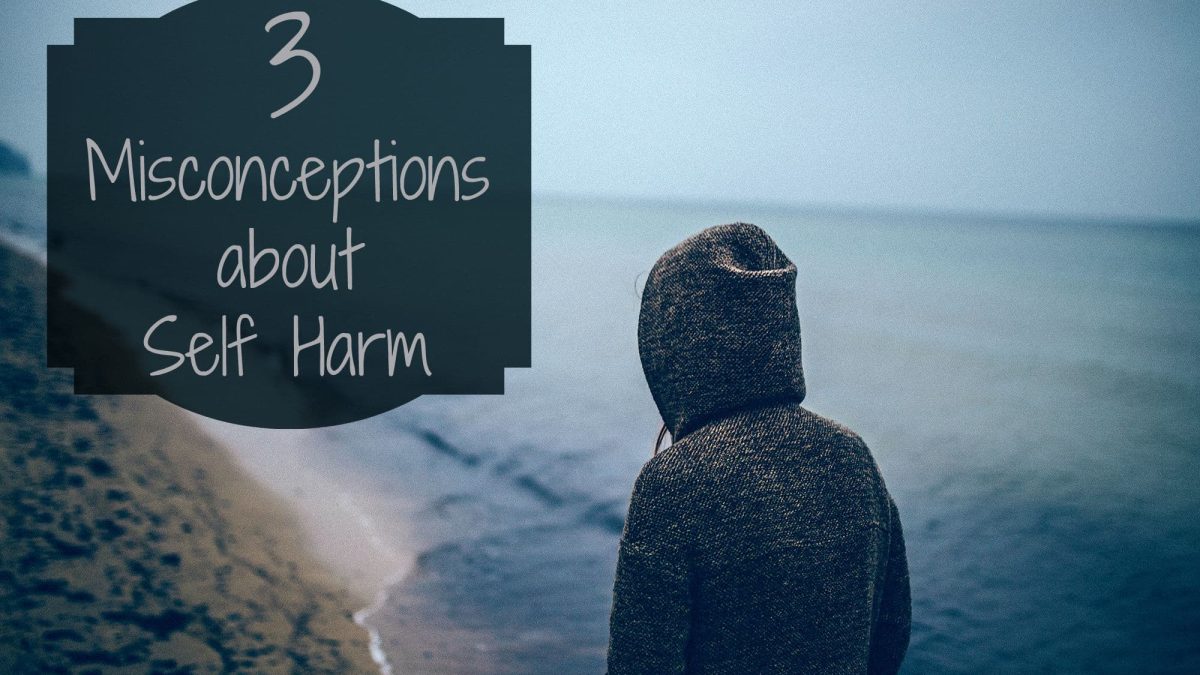This post has been on my mind and heart for a long time, and it’s definitely one that has made me nervous to hit the “publish” button. I’ve talked pretty openly about my struggles emotionally or mental health issues. One aspect I’ve never mentioned until today is that I am recovering from self harm.
I’m so grateful now to be able to put the word “recovering” in that sentence, and I have a very excellent counsellor to thank for that. Though it can still certainly be a struggle for me now. I started self harming when I was 14 and didn’t seek help until I was 24, thus it became a deeply ingrained coping mechanism after 10 years. Self harm (or some call it self injury) can become a impossibly hard to shake habbit. People generally look down on those who self harm, and there is a lot of resulting stigma and shame attached to it. Because I’ve been through it, I want to clear up three common misconceptions about self harm.
1. People just use self harm to get attention.
The majority of people who self harm go to great lengths to hid the evidence. Often they are ashamed of their behaviour and would be mortified for others to find out. However, there are some people also who do seemingly “show off” their injuries. If they are going to that length to get attention, then they need help just as badly as those who hide it. It is not the norm to intentionally inflict pain on oneself. This also goes with the idea that only teenage girls self harm. It’s difficult to get accurate statistics because it’s hidden, but the Canadian Mental Health Association estimates 1-4% of the population is affected. The rates are higher in teens and females, but self harm can affect anyone.
2. Self harm is cutting.
While cutting is one method of self harm, there are many other forms. Some of these include burning, hitting, scratching, or pulling out hair (which is called trichotillomania). There is no one form of self harm, and it may not appear the way you expect it too. Along with this note, I’ll mention that it is unhelpful to try to determine a “severity” of the injuries or to compare to other’s experiences. Self harm is self harm, and it is always an unhealthy behaviour.
3. People who self harm are suicidal.
Sometimes a person who self harms does go on to commit suicide, but the two are completely separate acts. Self harm does not have the intention of ending one’s life, and that is the most important difference. It is usually an attempt at managing stress and coping with overwhelming emotions. Most people who self harm do not want to die; they are just trying to deal with life. Unfortunately they’ve learned an unhealthy method of coping. Sometimes, though it seems counterintuitive, it’s even a means of avoiding suicide.
For my own story, in recent years I’ve also been working through body confidence issues and have started wearing a regular bathing suit (instead of shorts). At first I was terrified of people seeing my scars. While I’ve got them in different places on my body, the most dense area is my upper thigh. I decided to get a tattoo over top to transform my scars into something beautiful. It was an incredible part of the healing process for me and has marked a new part of my life too – choosing to love myself instead of hate and being able to deal with life in a healthier manner.
Self harm can become a repetitive behaviour which makes it extremely difficult to stop once the cycle has begun. If you struggle with self harm, I encourage you to confide in someone you trust and seek professional help. You can learn better, healthy coping skills that will eventually take the place of the self harming behaviours. It will be difficult, take a lot of time, and there will likely be relapses, but I can say from my own experience, that it is so worth it.
-Grace
Thank you Grace for sharing your story with us, it is truly inspiring to see the challenges you have overcome and continue to conquer. For more incredible blogs, recipes, and life hacks be sure to check out Grace’s website Heartful Habits.
Okanagan Clinical Counselling Services has fully certified clinicians who are eager to help you no matter what your concern may be. Please do not hesitate to call us at 250.718.9291 to find out how we may help you.









